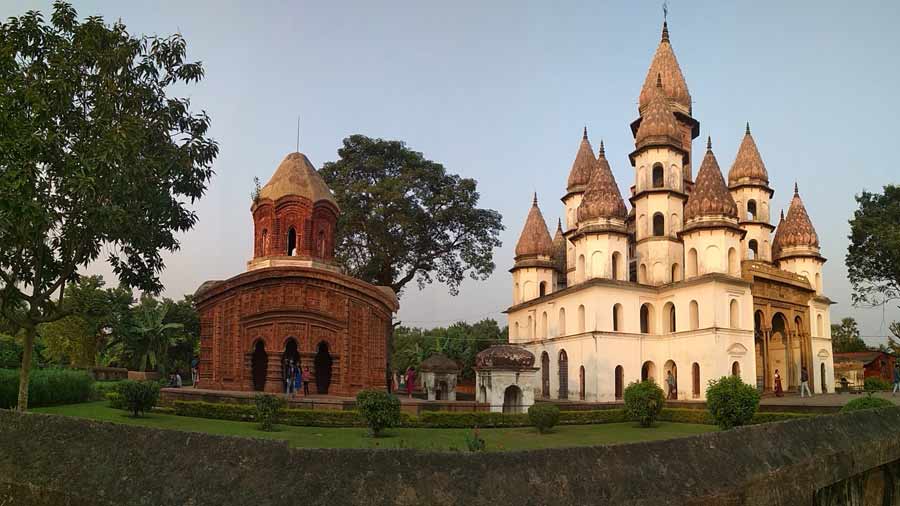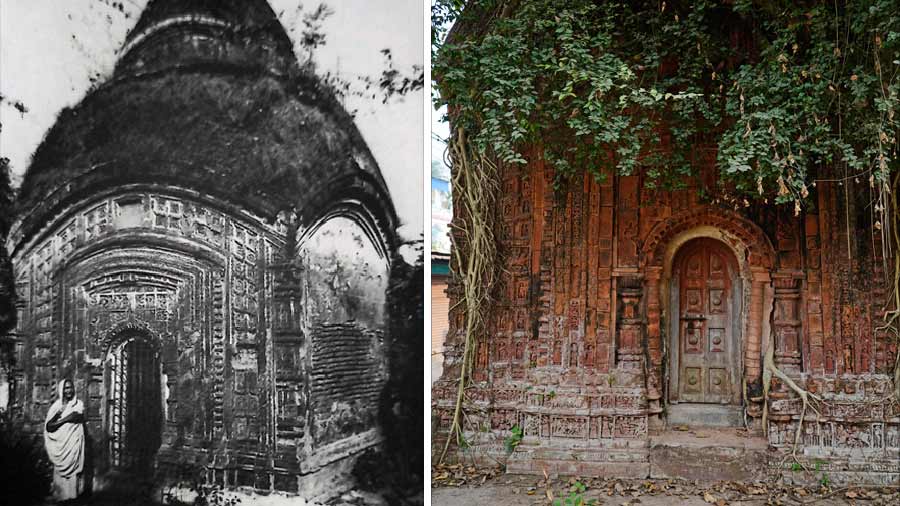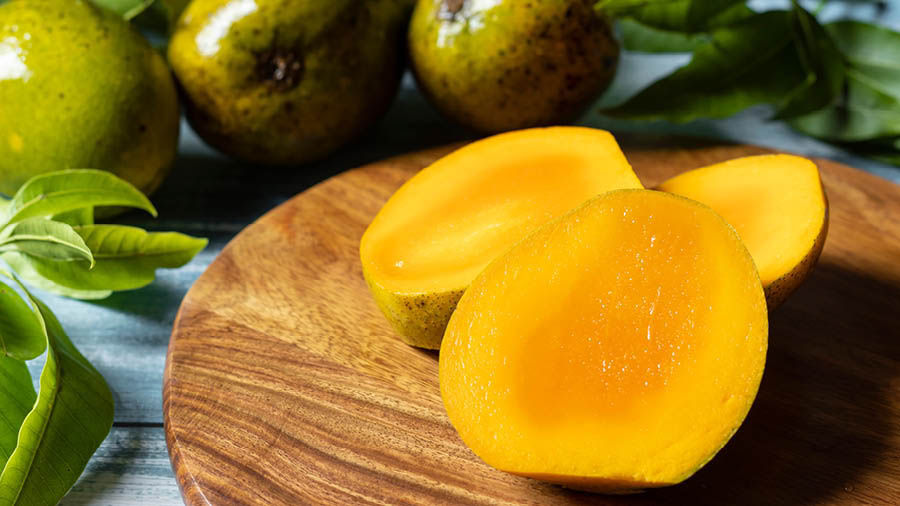Kolkata is a city studded with various kinds of temples throughout its roads, lanes and bylanes. Of them, shrines designed as per Bengal style of temple architecture are highest in number. Many of them are aged over 100 years or even more.
While many of them are very famous like the Dakshineswar Kali temple, Kalighat Kali temple, Thanthania Kali temple, Radhanath temple of the Mondal family at Tollygunge, Lal Mandir in the middle of Chittaranjan Avenue, Durgeswar Mahadev alias Mota Shiva temple near Nimtala Ghat or Dwadash Shiva temple at Barisha, there are many such temples which are not as popular as their famous counterpart, despite having rarity in their architecture or history.
Bhabtarini Kali Temple near Fariapukur
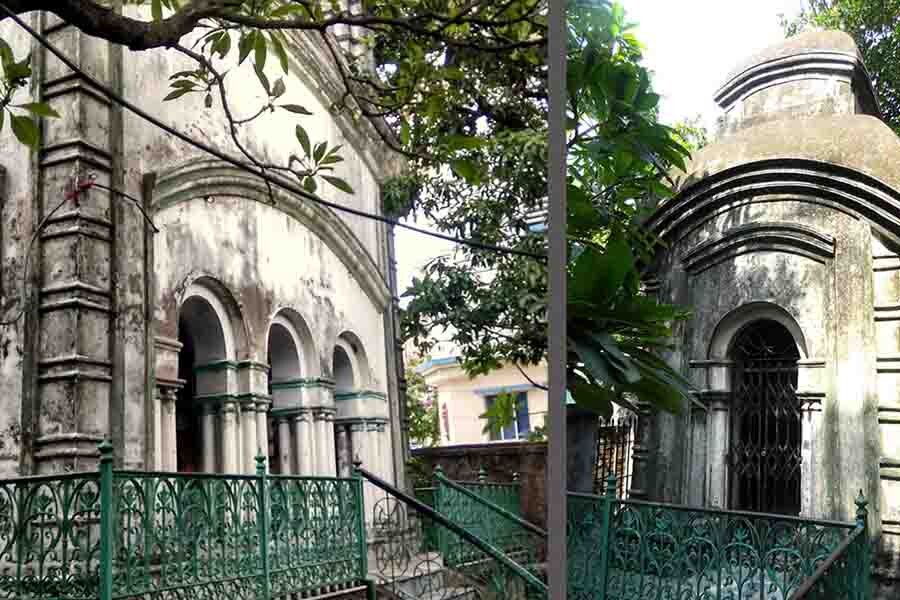
The decorative cast iron railings around the platform of Bhabatarini temple and (right) one of the two Shiva temples adjacent to it.
While the name ‘Bhabatarini Kali temple’ reminds one of the famous shrine at Dakhineswar, this nine-pinnacled temple with ridged turrets belonging to the local Ghosh family has no connection with it. The humble-looking Navaratna styled temple is located inside a considerable large premise at 2/2A, Balaram Ghosh Street near Fariapukur. The temple is surrounded by several trees. Located amidst several high-rises, it is a serene place to visit specially in the evening when ‘arati’ takes place. Thankfully, till now, the temple has not been distastefully painted like many of its contemporary shrines. The temple has been built on a raised platform studded with decorated wrought iron railings. There are two aatchala-styled temples on this platform too. A natmandir is inside the premises for visitors.
The deity is also known locally as ‘ghomta Kali’ alias ‘veiled Kali’. This is because the goddess is adorned with a saree and a veil formed over her head as usually done by many saree-clad Bengali women. The reason of such a styled deity is because one of ancestors of the Ghosh family named Tulsiram Ghosh dreamed of such a deity.
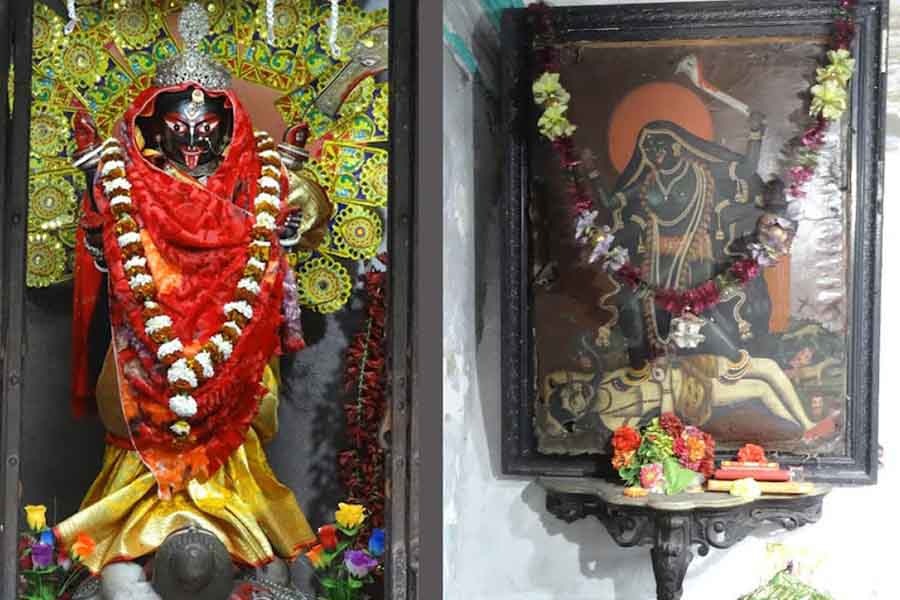
The saree-clad idol of goddess Bhabatarini and (right) the painting of Kali which Tulsiram dreamt of.
As per family legend, Tulsiram sketched the deity recollecting his dream and the present deity was created as per the painting. Along with the Kali idol, the painting is also housed in the inner sanctum of the temple. Interestingly, the temple also houses a narayanshila named Sridhar, Krishna Radhika and a single Krishna idol, as other deities who are regularly worshipped along with the goddess Kali. Perhaps, owing to the presence of Vaishnav deities, the goddess is only offered vegetarian food.
The earliest known descendant of the Ghosh family is Makarand Ghosh. Ajit Kumar Basu mentions in his book Kalikaktar Rajpath (1996) that the family has their roots at a village named Paital in Hooghly district. He also mentions that Tulsiram Ghosh was the 23rd generation of the family. Tulsiram was employed under Nawab Murshid Quli Khan as one of his dewans. He had built a temple of Joy Kali at Dhaka. Later, he shifted to Kolkata with his uncle Balaram Ghosh.
The family claims that the road was named after his uncle Balaram Ghosh who stayed at house number 24 in contrary to the popular opinion of many writers like Prankrishna Datta that the street was named after the grandson of Manohar Ghosh who is believed to be the founder of Chitteswari temple at Cossipore in 1610. However, no suitable information about Tulsiram’s uncle is available in historical documents. On the contrary, Manohar’s grandson, Balaram Ghosh, was a well-known businessman who stayed at Chandannagar and acted as advisory to French governer Dupleix. He had four sons of whom Hari Ghosh settled at Kantapukur area of Kolkata. Hari Ghosh Street in north Kolkata is named after him.
Tulsiram Ghosh had two sons — Shibaprasad and Bhabaniprasad. Bhabaniprasad’s son, Haraprasad, had received a divine message in his dream about the construction of the Bhabatarini temple. At that time, the family members stayed at a huge mansion at Balaram Ghosh Street. Haraprasad acquired a piece of land in front of his residence and proceeded to build up the temple. The deity of Bhabatarini is made of touchstone and the Shiva below it is made of white marble. The four-handed goddess adorned with a silver crown on her head and a garland of skull around her neck stands in a firm posture with one foot over the body of Shiva. One of her hands holds a khadga (crescent-shaped sword or a giant sickle) and other holds a severed head of demon. The other two hands are in abhay and barabhay posture.
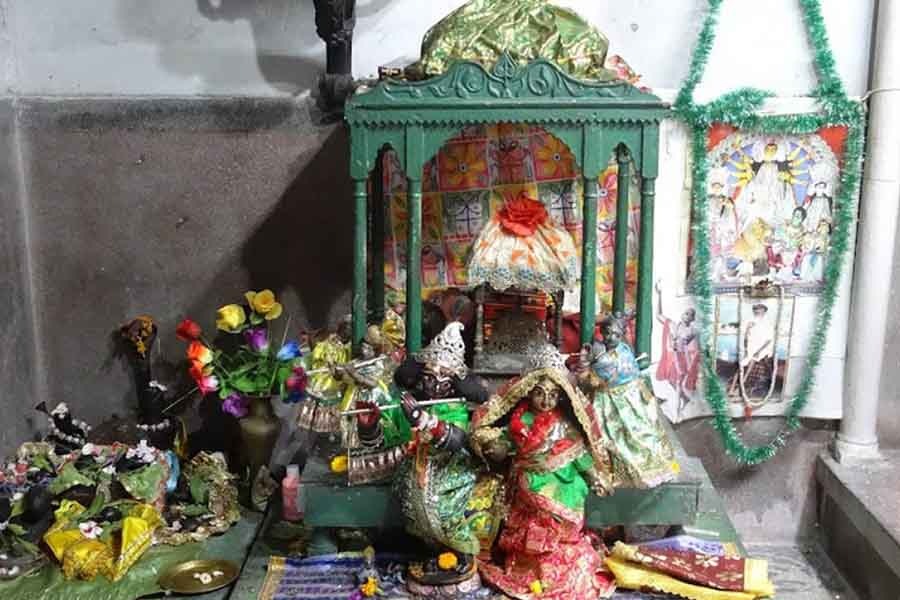
Idols of other deities worshipped at Bhabatarini temple.
Haraprasad died before completion of the Bhabatarini temple. His wife, Dayamayee Devi, completed the construction. There was a spacious garden built around the temple complex. She also built two aatchala-styled temples each on either side of the nine-pinnacled shrine named Hareshwar and Haraprasanna along with a natmandir.
As per the book Kolkatar 51 Kalibatri by Arun Mukhopadhyay, construction of the temples were completed in 1294 and inaugurated on 5th Baishakh, 1295 Bangabda (April, 1888). Dayamoyi Devi died on February 5, 1898. Before her death, Dayamoyi Devi converted the temple and its adjoining area as debottar property (any property absolutely dedicated to Hindu religious or charitable purpose) and made his son, Saradaprasad Ghosh, as its main sevait. Saradaprasad continued the worship along with his wife, Usharani Devi, who hailed from Sovabazar Rajbari.
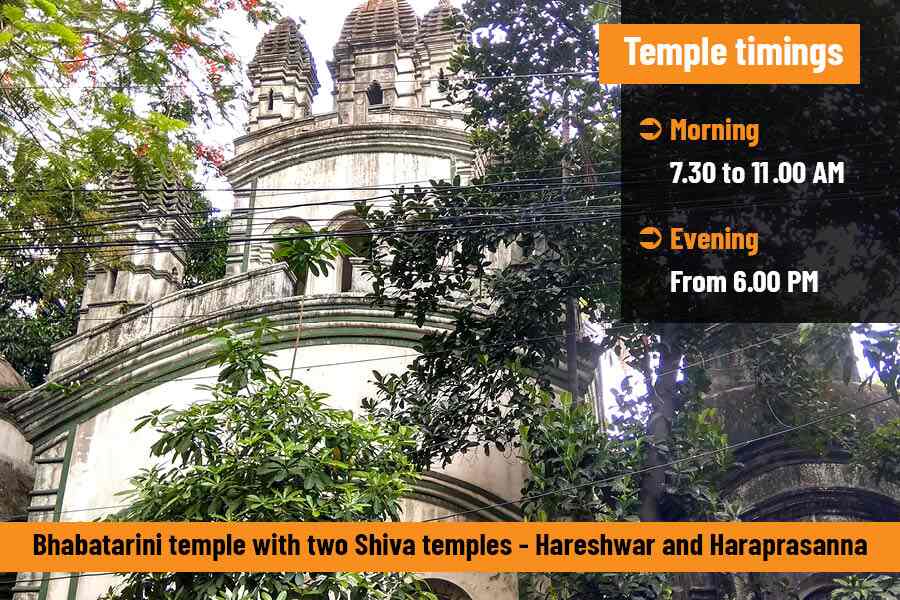
After the death of Saradaprasad, the residential house of the Ghosh family along with a significant portion of their debottar property went out of the hands of their hands. Saradaprasad’s younger son, Bhupendra Prasad took charge of the temple. He was interested in music and established a society named Bhabatarini Sangit Sammillini in 1940. Several renowned musicians and members of the society used to perform at the natmandir during the evening time. The society was shut down in 1966. Bhupendra Prasad died in 1971. Famous radio broadcaster, playwright and narrator Birendra Krishna Bhadra was related to this family. Bhupendra Prasad’s wife, Pravabati, was Birendra Krishna’s elder sister.
Presently, Jayati Ghosh, wife of Manabanendra Ghosh, youngest son of Bhupendra Prasad, is the main spokesperson of the family, who resides in a small house inside the temple complex. Many devotees visit the temple during its foundation date, Kali Puja, Durga Puja and other important dates. Since there are Shiva temples inside the premises devotees visit the temple during Shiva Ratri, Gajan and Chaitra Sankranti.



